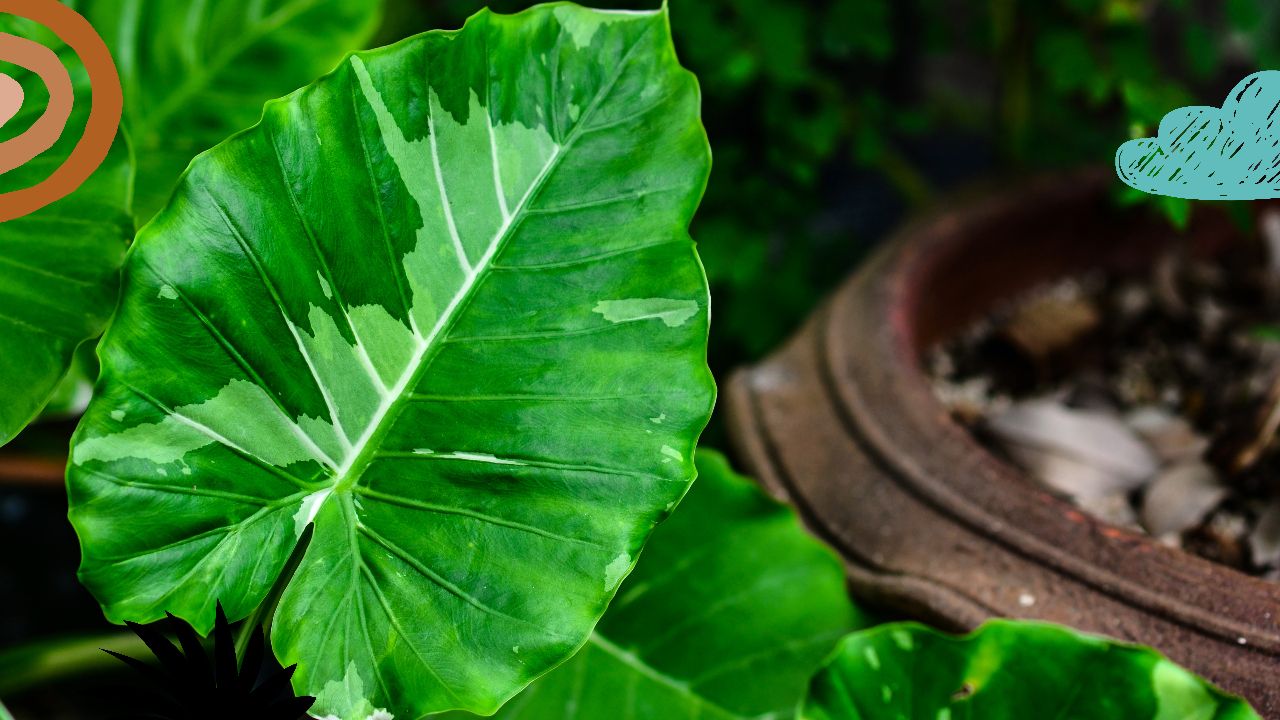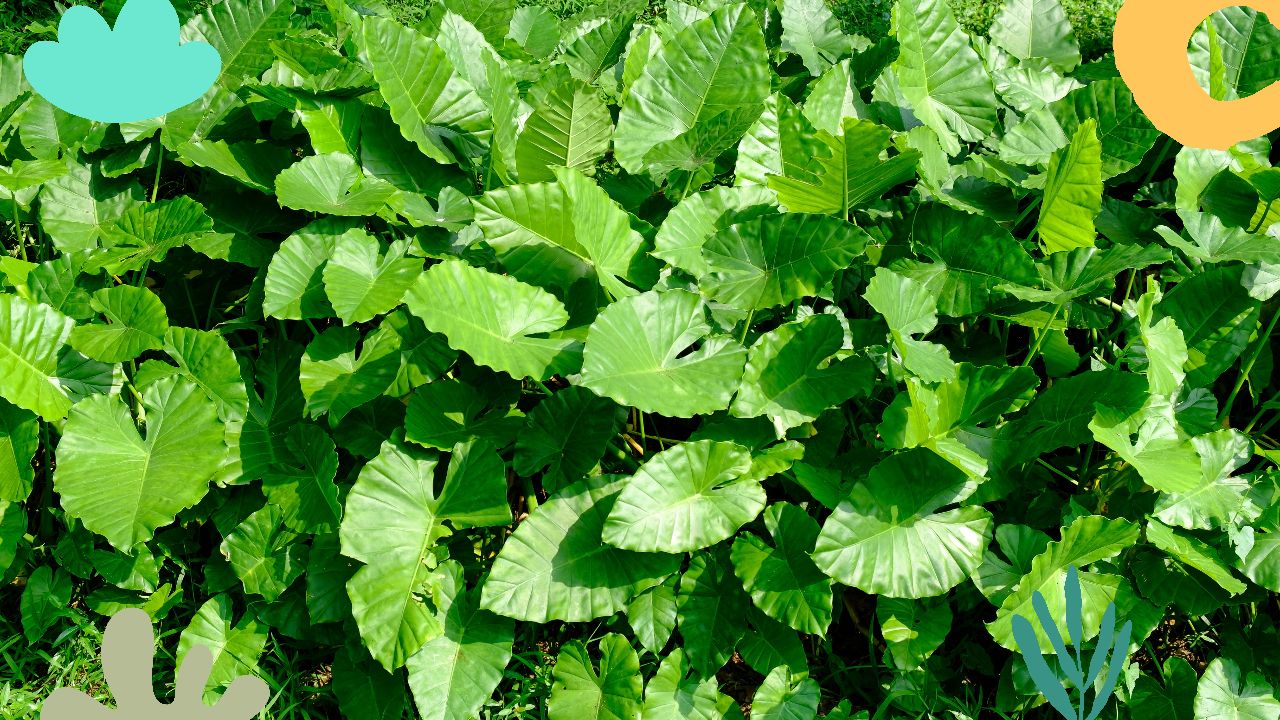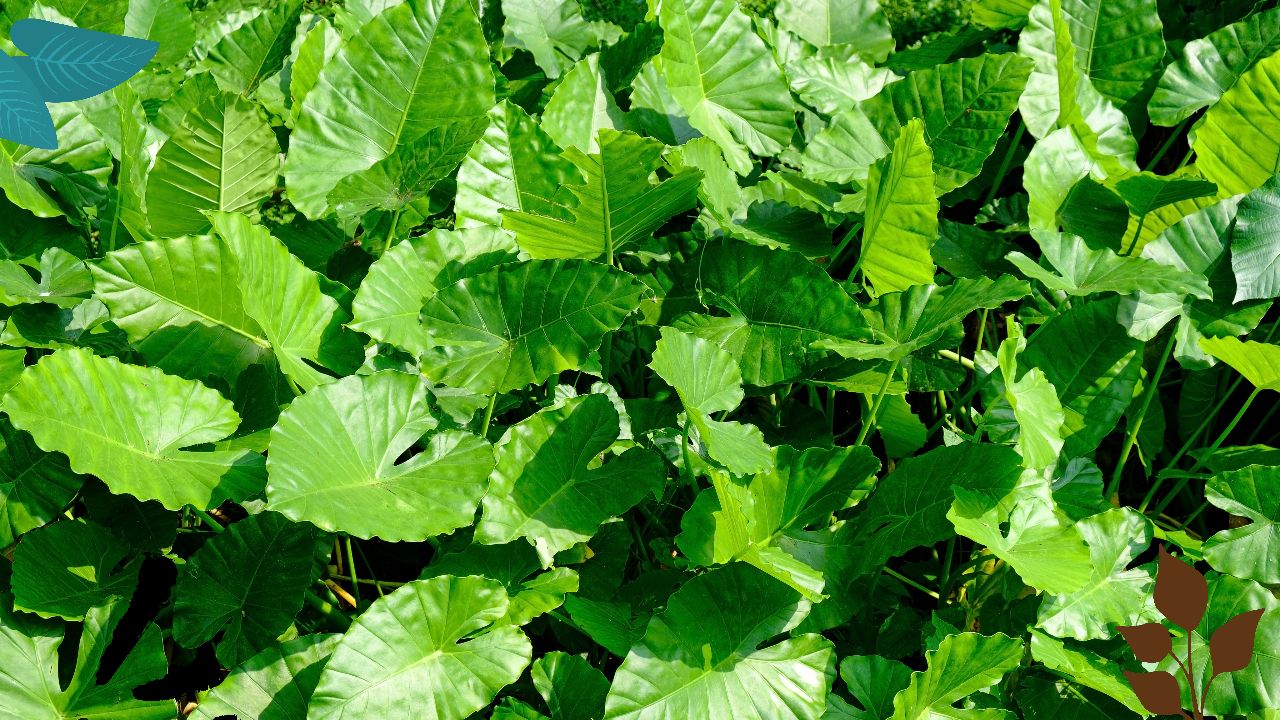How to Grow Alocasia Odora Plants: Tips from East and Southeast Asia
By HeyHome • September 15, 2023

At a Glance: Alocasia Odora Essentials
- Common Names: Giant Elephant Ear, Asian Taro, Night-Scented Lily
- Scientific Name: Alocasia Odora
- Plant Family: Araceae
- Plant Type: Corm-based Perennial
- Mature Size: Height ranges from 4-8 feet; Width ranges from 4-6 feet
- Sunlight Requirements: Prefers Partial Sunlight
- Soil Type: Prefers Moist yet Well-Drained Soil
- Soil pH: Acidic
- Blooming Seasons: Spring and Summer
- Flower Colors: Pink, Orange, White
- Climate Suitability: USDA Hardiness Zones 9-11
- Native Area: Originally from Asia
- Toxicity: Toxic to Both Pets and Humans
Join our newsletter
Stay on top of the latest in landscaping and lawn care with one valuable tip right in your inbox every Saturday morning.
Introduction: The Mystique of Alocasia Odora Plants
In the lush landscapes of East and Southeast Asia, a unique plant captures the hearts and noses of plant enthusiasts and casual observers alike. Meet the Alocasia Odora, commonly known as the night-scented lily. This tropical plant boasts not just striking beauty, but also an alluring fragrance that fills the air, mainly during the night.
Alocasia Odora plants have grown in popularity across the region for various reasons. First, they are stunning to look at, with their giant upright elephant ear leaves serving as the main attraction. However, their visual allure is just the tip of the iceberg. These odora plants are not just eye candy; they serve a functional role in traditional Asian taro dishes, bringing utility and aesthetics into perfect harmony.
Why are they so sought after in East and Southeast Asia? Beyond their lovely scent and aesthetic appeal, Alocasia Odora plants are relatively low maintenance, requiring only well-draining soil and a balance between direct sunlight and bright indirect light for optimal growth. They can be a plant outdoors or serve as a statement piece inside your home, provided you meet their specific care needs.
So whether you're an experienced horticulturist or just starting to dip your toes into the world of plants, read on to explore our comprehensive Alocasia Odora care guide. Here, we'll cover everything from the ideal Alocasia Odora temperature to combating common pests like spider mites. Let's unravel the mystique that surrounds this remarkable plant.

The Origin Story: Alocasia Odora in East and Southeast Asia
Picture a verdant garden in East and Southeast Asia, brimming with exotic flora. Amidst the foliage, the Alocasia Odora plant stands as a venerable member, revered for its roots that plunge deep into the annals of Asian history. Known colloquially as the night-scented lily, this tropical plant has an intriguing origin story that weaves through ancient traditions and horticultural legacy.
Alocasia Odora plants hold a special place in Asian culture, serving not just as an eye-catching piece of garden art but also as a vital ingredient in traditional Asian taro recipes. The giant upright elephant ear leaves of this odora plant were frequently depicted in ancient paintings, symbolizing prosperity and good fortune. Furthermore, its lovely scent has led to its incorporation in religious rituals, where its aroma would fill the air as prayers ascended.
In Asian gardens, this low maintenance plant is often grown outdoors, forming an essential part of the traditional landscape design. It represents a synthesis of both aesthetic appeal and functional utility. Renowned for thriving in well-draining soil, it can weather varying conditions while its broad leaves capture both direct sunlight and bright indirect light, echoing the balance inherent in Asian philosophy.
From spiritual ceremonies to culinary traditions, the Alocasia Odora plant has cemented its role as an indispensable component of Asian culture. Its rich history and myriad uses make it not just a plant but a living testament to a shared heritage.

Understanding the Alocasia Odora Plant: From Corm to Leaf
Have you ever beheld the striking beauty of an Alocasia Odora, also known as the night-scented lily? Whether you've encountered it in a lush outdoor garden or as a potted plant indoors, its captivating features are hard to ignore. Let's delve into the fascinating world of Alocasia Odora plants from their underground corms to their towering leaves.
Part of the Araceae family, Alocasia Odora is a tropical plant that often goes by other colorful names like 'Asian taro' and 'giant upright elephant ear.' When fully mature, these plants can reach up to 5 feet in height, with leaves as long as 2 feet—truly a majestic sight. They are a popular feature in shade gardens throughout East and Southeast Asia, but are increasingly being grown indoors by plant enthusiasts around the world.
But it's not just about size; these Alocasia Odora plants are nothing short of extraordinary. With leaves resembling large, upright elephant ears, they have a waxy, deep green surface that can glisten in bright indirect light. Although more subtle, the plant's flower—a pale, hood-like structure—also adds to its allure.
While the Alocasia Odora plant is a feast for the eyes, it's important to remember that it is considered toxic to both pets and humans. It contains calcium oxalate crystals that can cause skin and eye irritation, or worse if ingested. Always exercise caution, especially if you have curious pets or small children.
Whether you're a seasoned plant parent or a budding botanist, understanding the nuances of Alocasia Odora care is crucial. From the right soil mix to the ideal temperatures, this guide aims to cover every aspect of caring for this extraordinary plant. With the right care and attention, you can enjoy the Alocasia Odora's striking beauty for years to come.

Ideal Conditions for Growing Alocasia Plants
Unlocking the secret to thriving Alocasia Odora plants is all about understanding their ideal growing conditions. Originating from the warm, humid climates of East and Southeast Asia, this stunning tropical plant has specific needs that are crucial for its optimum health.
Sunlight Requirements
When it comes to Alocasia Odora light requirements, bright indirect light is the sweet spot. Although they can tolerate some amount of direct sunlight, too much direct sunlight can scorch the plant's giant elephant ear-like leaves. An east-facing window is often ideal, as it provides enough hours of indirect light while avoiding the harshness of the afternoon sun.
Soil Quality and pH
Your Alocasia Odora plant will thrive in well-draining soil. A good soil mix rich in organic matter such as peat moss or coco coir can help maintain soil moisture without causing root rot. Proper drainage is crucial, as stagnant water can quickly lead to fungal issues. When it comes to soil pH, Alocasia Odora prefers slightly acidic to neutral soil, with pH levels ranging from 5.5 to 7.
Temperature and Humidity
Warm temperatures are non-negotiable for Alocasia Odora. The ideal temperature is between 60°F and 80°F (16°C to 27°C). Humidity also plays a key role; a humid environment mimics the plant's natural habitat. Using a pebble tray or humidifier can help maintain the moist atmosphere this plant loves.
Whether you're planting outdoors or as a low-maintenance houseplant, understanding these ideal conditions is the first step in your Alocasia Odora care guide. By mimicking its natural habitat, from quality soil to bright indirect sunlight, you can enjoy the stunning foliage and lovely scent of this magnificent plant year-round.

A Step-by-Step Guide: Planting Your Night-Scented Lily
So you've decided to invite the enchanting Night-Scented Lily, also known as Alocasia Odora, into your life. This verdant beauty, with its captivating scent and awe-inspiring leaves, is about to become the main attraction of your garden or indoor space. But the question arises: "How do I plant it and where?" Allow us to guide you through each crucial step, from choosing the perfect location to handling the corm with care.
Where to Plant: Indoors vs. Outdoors
The first decision to make is where to plant your Alocasia Odora. While it can be grown indoors, it is also a popular outdoor plant in regions with warm temperatures. Indoors, an east-facing window can provide the bright indirect light the plant requires. Outdoors, consider a location that offers some shade to protect the plant from too much direct sunlight.
Join our newsletter
Stay ahead of the curve in all things outdoor.
Get the inside scoop on the latest landscaping, lawn care, and fencing trends with 1 actionable tip every Saturday morning.
Soil Preparation and Potting Tips
Before you get your hands dirty, let's talk about soil. Alocasia Odora thrives in well-draining soil rich in organic matter. A potting mix featuring peat moss or coco coir is ideal, offering the proper drainage that helps to prevent root rot. When planting in a pot, ensure it has sufficient drainage holes.
For those planting outdoors, dig a hole about twice the size of the corm to allow for proper root expansion. Enhance the native soil by mixing in some organic matter, which also helps to keep the soil moist but not waterlogged.
Planting the Corm
The corm, or underground stem, is the starting point of your Alocasia Odora plant. Plant it about 2-3 inches deep, with the "eyes" or growing points facing upward. Gently backfill the hole or pot with your prepared soil mix, making sure not to compress the soil too tightly, as this can inhibit growth.
Now that you've planted your Night-Scented Lily, you're on your way to becoming a proud caretaker of this exotic gem. With the right care, you'll soon witness the unfurling of those magnificent, giant elephant ear leaves and experience the nocturnal allure of its unique scent.
Nurturing Your Plant: Watering and Fertilization
Have you ever felt overwhelmed by the sheer amount of advice about how to properly nurture an Alocasia Odora plant? You're not alone. The mystique of this night-scented lily often leads to confusion when it comes to care, particularly in the realms of watering and fertilization. Here, we strip away the guesswork, offering you clear, actionable steps to ensure your plant not only survives but thrives.
Best Practices for Watering
Watering your Alocasia Odora is a delicate art. You'll want to keep the soil moist but never waterlogged to avoid root rot. A good rule of thumb is to water when the top inch of the soil is dry to the touch. In a humid environment, the plant will require less frequent watering compared to a dry climate. Always use well-draining soil and pots with sufficient drainage holes to ensure proper moisture levels.
Fertilizer Options and Schedules
Alocasia Odora plants are heavy feeders during their growing season, from late spring to early summer. A balanced liquid fertilizer, diluted to half-strength, can work wonders. Alternatively, you can opt for slow-release granular fertilizers. Whichever you choose, make sure to follow the manufacturer's guidelines to avoid fertilizer burn.
Consider this your concise guide to watering and fertilizing your Alocasia Odora. Follow these steps, and watch your night-scented lily flourish, gracing your home or garden with its striking beauty and intoxicating aroma.
Common Problems and Their Solutions
So you've decided to grow an Alocasia Odora, also known as the night-scented lily, but you're encountering some hitches? Don't fret! This tropical plant, native to East and Southeast Asia, can present a few challenges even to the seasoned plant parent. In this section, we'll demystify the common issues that plague Alocasia Odora plants, from leaf discolorations to pesky spider mites.
Addressing Leaf Issues: Yellow, Brown, and Drooping Leaves
Let's begin with the leaves—often the first indicators that something is amiss. Yellow leaves might signal too much direct sunlight, while brown tips often indicate a need for higher humidity. Drooping leaves, on the other hand, could mean that the plant is either over-watered or under-watered. Always remember that this plant prefers bright indirect light and well-draining soil to keep the root system healthy.
Pests and Diseases: Prevention and Cure
Pest problems like spider mites or fungal issues can also be a concern for Alocasia Odora plants. A preventive spray of neem oil can go a long way. Ensure proper drainage and use a soil mix rich in organic matter to avoid conditions that invite disease.
While Alocasia Odora care may seem intricate, proper care guidelines can make it a relatively low-maintenance tropical beauty. Whether you're looking to grow your Alocasia Odora as an outdoor plant in a shade garden or as a striking indoor specimen, understanding these common issues will make your Alocasia Odora care journey smoother.
Follow these best practices, and you're well on your way to nurturing a healthy, thriving Alocasia Odora.
Overwintering and Propagating: Keep the Green Going
Winter is coming, but that doesn't mean your Alocasia Odora, also known as the night-scented lily, has to hibernate! Don't let the colder months become a full stop to the lush, green world of your plant. In this guide, we'll walk you through the essential steps of overwintering your Alocasia Odora, ensuring it not only survives the chill but thrives. And if you've fallen in love with this striking tropical plant, why not make more? We'll delve into the fascinating process of propagating your Alocasia Odora, giving you more of this leafy wonder to adore or share with friends.
Whether you're an experienced gardener or a beginner looking for some green thumb guidance, this section will equip you with the knowledge to keep your Alocasia Odora lush and multiplying, all year round.
FAQs about Alocasia Odora
Embarking on the journey of caring for an Alocasia Odora? You're in for a botanical treat, but you might be brimming with questions about this captivating plant, also known as the night-scented lily. In this FAQ section, we'll answer some of the most common questions about Alocasia Odora care to ensure your green companion thrives.
How Often Should I Water My Alocasia Odora?
The watering schedule for Alocasia Odora varies based on humidity and temperature. Generally, you should water when the top inch of the soil feels dry. Over-watering can lead to root rot, so it's better to keep the soil moist but not waterlogged.
What Type of Fertilizer is Best for Alocasia Odora?
A balanced liquid fertilizer is generally recommended. Fertilize your plant once a month during the growing season (spring and summer), and reduce to every 6–8 weeks during the fall and winter.
Why Are My Alocasia Odora Leaves Drooping?
Drooping leaves can be a sign of either over-watering or under-watering. If the soil is soggy, you're likely over-watering. If it's dry, you may not be watering enough. Make sure to also check for common pests like spider mites that might be stressing your plant.
This section should clear up some of your initial concerns, and set you on the path to becoming an Alocasia Odora expert. Stay tuned for more detailed information on each topic!
Conclusion: The Joy of Growing Alocasia Odora
Congratulations on journeying through this comprehensive guide on how to grow and care for Alocasia Odora, an exotic marvel from East and Southeast Asia. Nurturing this plant isn't just about green leaves and lovely scents; it's about fostering a piece of history and culture in your own home or garden. With the right attention to sunlight, soil, and proper care routines, this captivating plant can be more than just another decorative piece—it can be a conversation starter, a point of pride, and a daily reminder of the intricate beauty that nature offers. Happy planting!
Join our newsletter
Stay ahead of the curve in all things outdoor.
Get the inside scoop on the latest landscaping, lawn care, and fencing trends with 1 actionable tip every Saturday morning.